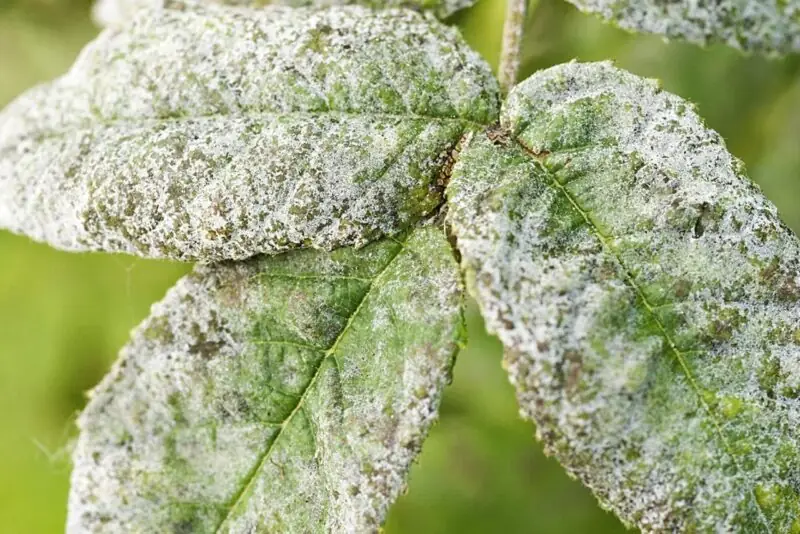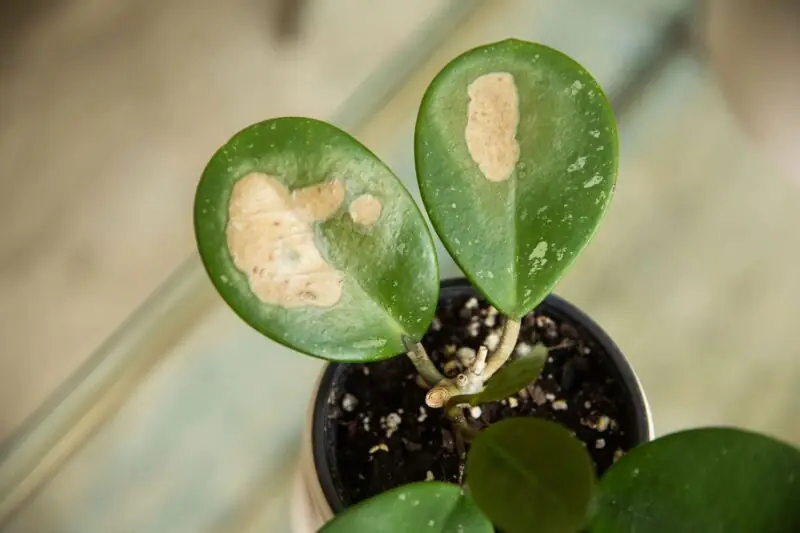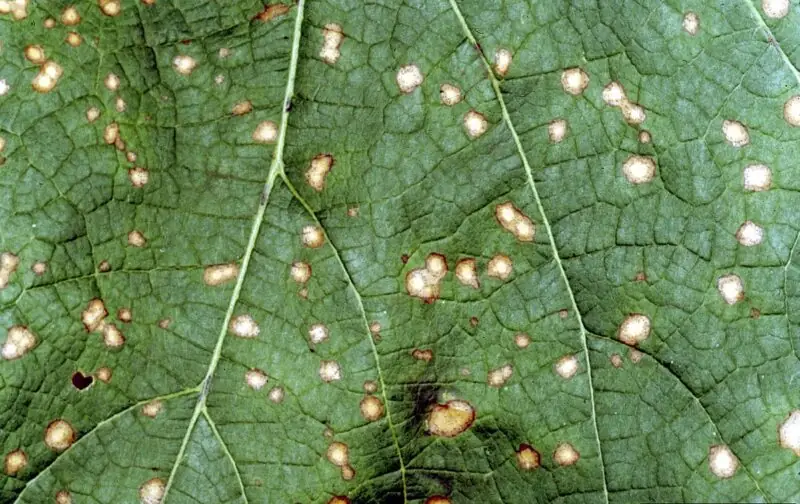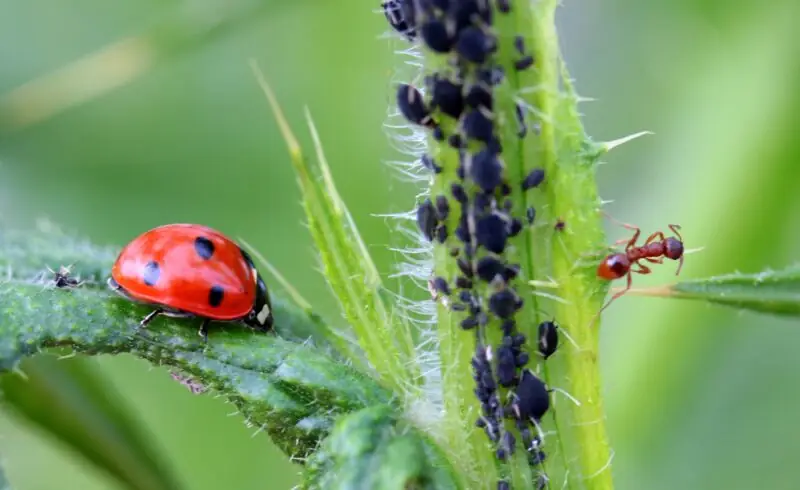Prevent White Spots on Plant Leaves: Get Rid of Powdery Mildew on Houseplants

Experiencing the delight of indoor gardening can be disrupted by unexpected issues. It’s quite disconcerting when, while carrying out routine plant care, you notice powdery white spots on the leaves of your plants, which can cause white spots. If you find yourself thinking, “My plant has white spots on the leaves,” don’t panic! Though your plant might be under some stress, it’s not a terminal condition. Let’s explore this subject – understanding the causes of these powdery white spots, deciding on a suitable treatment, and determining effective prevention strategies to maintain the health of your indoor plants.
Identifying the Cause of White Spots
Recognizing what’s causing the white spots on your plant leaves is the first crucial step towards addressing the issue. There are several possibilities to consider, some more common than others.
Is Powdery Mildew Causing the White Spots on My Houseplant?
The notorious fungal disease known as powdery mildew often manifests as white or gray powdery spots on plant leaves, stems, and other parts of the plant. This plant disease is not limited to specific plant types and can potentially affect a wide range of species. Powdery mildew thrives in areas with poor air circulation and high humidity, making it a common issue for indoor plants. If you’ve noticed white spots, powdery mildew might be the culprit. Preventing powdery mildew involves maintaining good airflow and humidity control, as well as regularly inspecting your plants for signs of the white fungus. Prompt action is necessary to isolate infected plants and prevent the spread of powdery mildew spores to other plants, which can be carried by the wind. Outdoor plants are also susceptible to powdery mildew during the growing season, so proactive measures are crucial to protect your plants’ health.
Could Insects or Pests Be the Cause of White Spots on My Indoor Plants?
Insects and pests are other common culprits behind the white spots on plant leaves. These unwelcome guests, including aphids and mealybugs, can leave behind white specks on your plant leaves. These critters feast on the sap of the plants, leading to various symptoms including yellowing leaves, wilting, and of course, white spots. As if this wasn’t enough, they can also secrete a sticky residue known as honeydew. This sweet excretion can, in turn, lead to a white, fluffy fungal growth called sooty mold.
Other Possible Causes of White Spots on Leaves
Although powdery mildew and pests are quite common, they aren’t the only causes of white spots on plant leaves. Several other factors can lead to this problem. Let’s delve into each one.
Sunburn

Despite needing sunlight for photosynthesis, plants can get too much of a good thing. Just like human skin, plant leaves can also suffer from sunburn. If your indoor plants are exposed to intense, direct sunlight for extended periods, they might develop sunburn, which often appears as white or yellow spots.
Chemical Burn
Over-fertilization or overuse of certain pesticides can lead to a chemical burn in plants. This condition often results in white or yellow spots appearing on the leaves. It’s important to remember that while fertilizers and pesticides can be helpful for plant growth and pest control, they should be used sparingly and according to the manufacturer’s instructions.
Water Stress
Just like humans, plants can experience stress, particularly due to water issues. Overwatering can lead to a condition where a white mold forms on the surface of the leaves. In contrast, underwatering can cause the leaves to develop a white coloration, often mistaken for powdery mildew. It’s essential to provide your plants with the right amount of water – not too little, not too much.
Nutrient Deficiency
Plants require a range of nutrients for optimal growth and health. If they’re lacking in certain nutrients, they might show signs of stress, including the formation of white spots on leaves. For instance, deficiencies in magnesium or iron often result in leaf discoloration. Regularly feeding your plants with a balanced fertilizer can prevent nutrient deficiencies.
Bacterial Leaf Spot

Bacterial leaf spot is another potential cause of white spots on plant leaves. This bacterial infection often starts with small, water-soaked spots that eventually turn yellow or brown. However, in some cases, the spots might appear white, especially in the early stages of infection.
Treating White Spots on Your Plant’s Leaves
Once you’ve identified the cause of the white spots on your plant’s leaves, the next step is to treat the problem. Let’s discuss how to handle the various causes of these troublesome spots.
How to Get Rid of Powdery Mildew?
Using Fungicides
Applying a fungicide can be an effective way to get rid of powdery mildew. There are many types of fungicides available, both synthetic and organic. Before using any product, always read and follow the manufacturer’s instructions carefully.
Employing Potassium Bicarbonate and Baking Soda Solutions
Potassium bicarbonate and baking soda are excellent home remedies for treating powdery mildew. They work by changing the pH on the leaf surface, making it less hospitable for the mildew spores. Mix either one with water and a small amount of dish soap, then spray it on the affected areas of your plants.
Controlling Pests
Regularly Cleaning Your Plants
Routine cleaning can help keep pests at bay. Use a damp cloth to wipe your plant leaves regularly. This not only removes dust but also dislodges any pests that might be hiding on the leaves.
Introducing Beneficial Insects

Believe it or not, not all insects are harmful to your plants. Some, like ladybugs and lacewings, are beneficial because they feed on common plant pests such as aphids and mealybugs. Introducing these friendly bugs to your indoor garden can help control pest populations.
Using Organic Pesticides
If your pest problem persists, consider using organic pesticides like neem oil. Neem oil is a natural substance that not only kills pests but also disrupts their life cycle, preventing future infestations.
Addressing Other Causes of White Spots on Leaves
Adjusting Watering Practices
Correct watering practices can prevent water stress. Always check the moisture level of your plant’s soil before watering. Overwatering can be just as harmful, if not more, than underwatering.
Providing the Right Nutrients
Regularly feed your plants with a balanced fertilizer to prevent nutrient deficiencies. Remember that different plants have different nutritional needs, so you might need to customize your feeding regimen based on the type of plant you have.
Protecting Plants from Sunburn and Chemical Burn
Protect your indoor plants from intense, direct sunlight to prevent sunburn. Similarly, be cautious when using fertilizers and pesticides to avoid chemical burn.
Treating Bacterial Leaf Spot
Bacterial leaf spot can be difficult to treat once it has established itself. Remove the affected leaves and avoid splashing water on the leaves to prevent the bacteria’s spread. In severe cases, you might need to apply a copper-based spray to control the infection.
FAQs
White spots on plant leaves can be caused by a number of factors, including powdery mildew, pests, nutrient deficiencies, sunburn, chemical burn, water stress, and bacterial leaf spot.
Treatment depends on the cause of the white spots. This could include using fungicides, controlling pests, adjusting watering practices, feeding plants with the right nutrients, protecting plants from sunburn and chemical burn, and treating bacterial leaf spot.
Powdery mildew is a common fungal disease that affects many types of plants. It manifests as white or gray powdery spots, typically appearing on the tops of leaves.
Preventing white spots on plant leaves involves maintaining good plant care practices. This includes proper watering, feeding, sunlight exposure, pest control, and cleanliness.
Conclusion
Experiencing white spots on your plant leaves can be quite concerning. However, with the right knowledge and techniques, you can identify the cause, treat the issue, and take measures to prevent future occurrences. Remember that plants, like all living organisms, face health challenges. But with proper care and attention, they can thrive despite these hurdles. Your indoor gardening journey continues, armed with the knowledge on how to handle white spots on plant leaves.